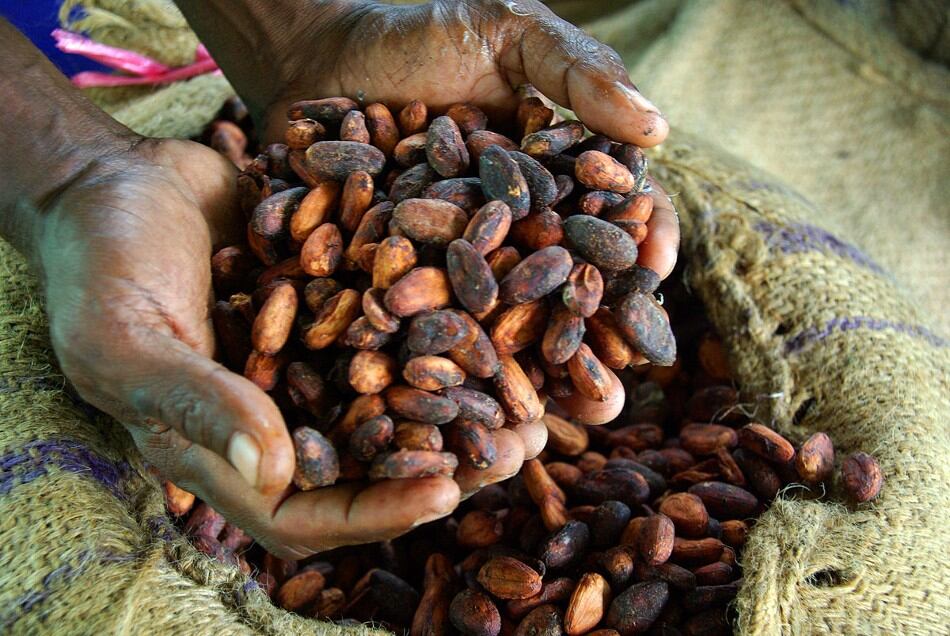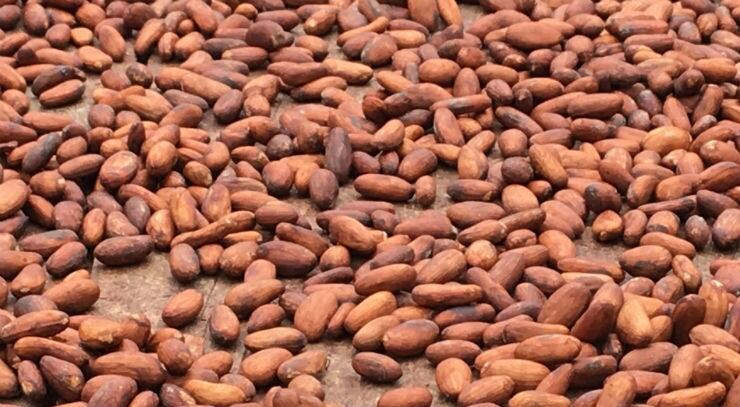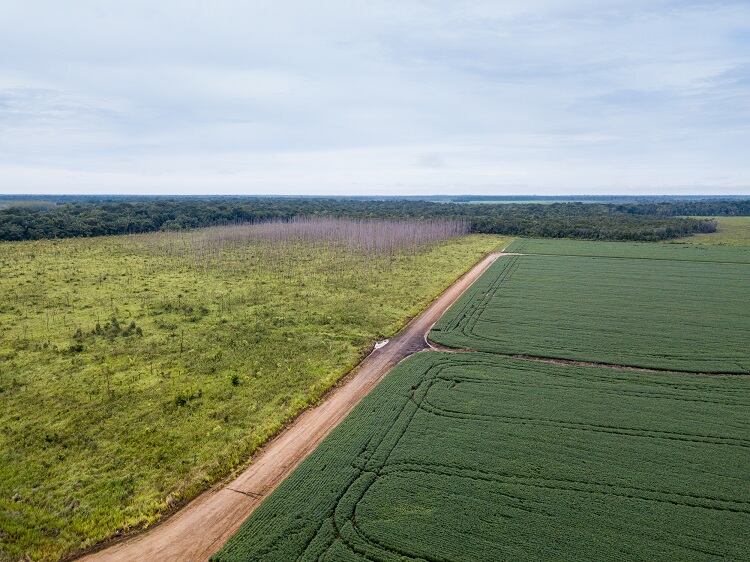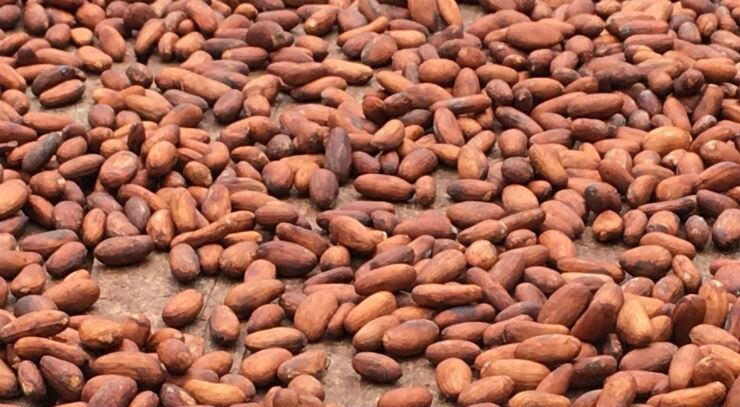The 2022 Cocoa Barometer, an eagerly awaited independent publication that provides an overview of current sustainability developments in the cocoa sector and highlights critical issues, is released today – and if not a damming account, makes sober reading for the industry as a whole.
After two decades of discussions on sustainability in the cocoa sector, the question the latest issue raises is: 'why haven’t we solved these problems yet?'
In the introduction to the bi-annual, 68-page publication, the authors write, ‘it sometimes feels as if every two years, the Cocoa Barometer writes about the same issues. In fact, additional challenges have been added over the years’.
The two branches of the cocoa problem tree - environmental protection and human rights - both stand on a tree trunk of farmer poverty. This poverty is exacerbated by the current cost-of-living crisis -- 2022 Cocoa Barometer
So, despite regular claims by chocolate companies and suppliers that they are achieving almost full traceability and transparency in their supply chains, why are the key issues of farmer poverty, child labour and deforestation still a blight on the industry?
“I think there's a few reasons for it … we've never solved the problems because we didn't really have to. All of the [companies’] sustainability programmes were based on voluntary Ideas,” says Antonie Fountain, Managing Director of the Voice Network, publishers of the Cocoa Barometer, in our exclusive podcast interview.
“And I think the last two years we've seen a major change starting to take place in the regulatory environment especially with the EU developing a series of regulations around sustainable supply chains whether that's on deforestation or in due diligence and you've got quite a few different legislative approaches in different countries in Europe starting to take shape. So we're at the beginning of really a new paradigm on the role of government.”
Mandatory legisation
Fountain believes that with more mandatory legislation the cocoa industry will be forced to clean up its act. “I'm not naive. I think that this is a complex instrument and like any complex instrument, it will take quite some time to calibrate it properly. So I think we won't be able to properly say whether or not it is having the intended effect for the next 10 or 15 years.”
He also believes that because cocoa is traded on the markets as a commodity with outcomes decided by people in boardrooms or in the corridors of power in Europe and the United States, it remains business as usual and therefore difficult for other actors or companies, who, with the best will in the world, are trying to make cocoa more sustainable.
‘The two branches of the cocoa problem tree - environmental protection and human rights - both stand on a tree trunk of farmer poverty. This poverty is exacerbated by the current cost-of-living crisis’, the 2022 Cocoa Barometer eloquently summarises.
Fountain also says there is a deep concern for the situation in Ghana where its annual consumer inflation rose to a new 21-year high of 40.4% in October, accelerating from 37.2% in September, after a month of rapid currency depreciation deepened an economic crisis.
Price fluctuations
There are several chapters in the 2022 Cocoa Barometer that deals with how financial speculation influences the price of cocoa – and why there are no measures to protect farmers against those price fluctuations.
“Those decisions have always been made that serve the interest of those people in the boardrooms and in the corridors of power. And so, the options that actually do make a real difference often don't get chosen because they are not in the interest of those boardrooms in the corridors of power,” says Fountain.
“I think that there's a real direct link there with the history of colonization, decolonization, and basically European and North American dominance of the rest of the world.”
Regarding the environment, the report states that climate change is both affecting cocoa production and made worse by cocoa-driven deforestation, and agrochemical use is causing both environmental damage and is hazardous to those applying them.
And we don’t need to emphasise the fact, or maybe we should (?) that child labour continues to be a challenge in West African cocoa production, where children are involved in age-inappropriate and hazardous labour – despite claims to the contrary in some quarters of the industry.
The 2022 Cocoa Barometer also reports that gender inequality raises barriers for women, both as rightsholders and as agents for change.
Regarding the Living Income Differential (LID) imposed by an Ivorian-Ghanaian government collaboration to drive up market prices, the authors say it is an important step, but so far farmgate prices are nowhere near remunerable.
“Living income as a concept has become a key objective for the cocoa sector in the past few years, however it hasn’t changed core business activities so far,” they write.
The 2022 Cocoa Barometer’s 10th edition is published this year in the run-up to Christmas, one of the most lucrative holiday seasons for the chocolate and confectionery sector; what message does Fountain have for consumers and companies, the buyers and producers, of what is a luxury item for many to include in a Christmas stocking?
“I think to the consumers … demand chocolate that has actually paid a fair price to cocoa farmers. Now what chocolate that is, is a lot harder to find. I think that there's a lot of misinformation and a lot of very nice marketing that goes into this conversation. But basically, we need to see chocolate that pays significantly higher prices at the farm level.
“I think that is also a big challenge to the chocolate companies and the cocoa and trading companies as well. We need to stop talking about our programmes and we need to start talking about our purchasing. It's as simple as that and there's a very big message to the governments as well. We need strong regulation in consuming countries, but we need a lot more transparency as well as investment in infrastructure in the producer countries.”
- Register now for the online 2022 Cocoa Barometer Launch: Wed 7 December 15:00 CET
- The 2022 Cocoa Barometer will then be available to download globally from cocoabarometer.org in the three major cocoa languages: English, French and Spanish
- Listen to the full interview with Antonie Fountain, Voice Network Managing Director, and member of the ConfectioneryNews’ editorial board, in the podcast version above.




